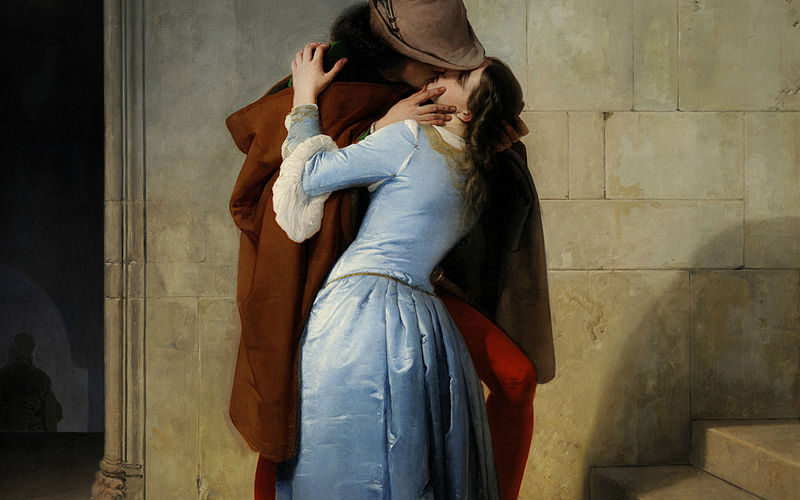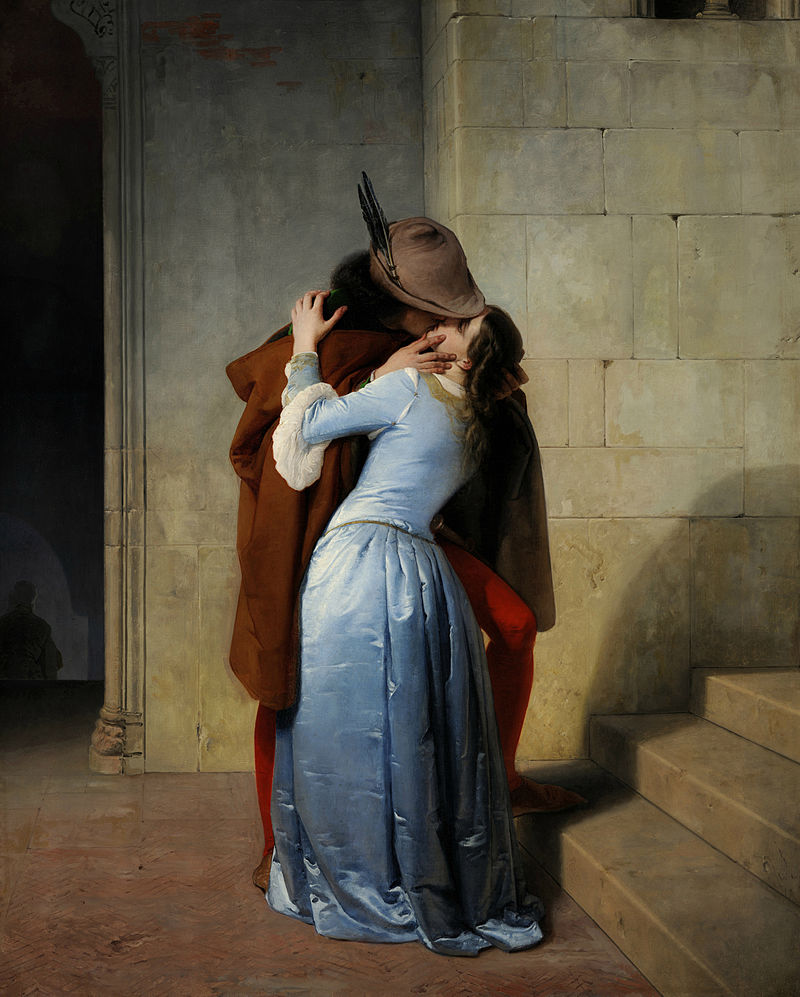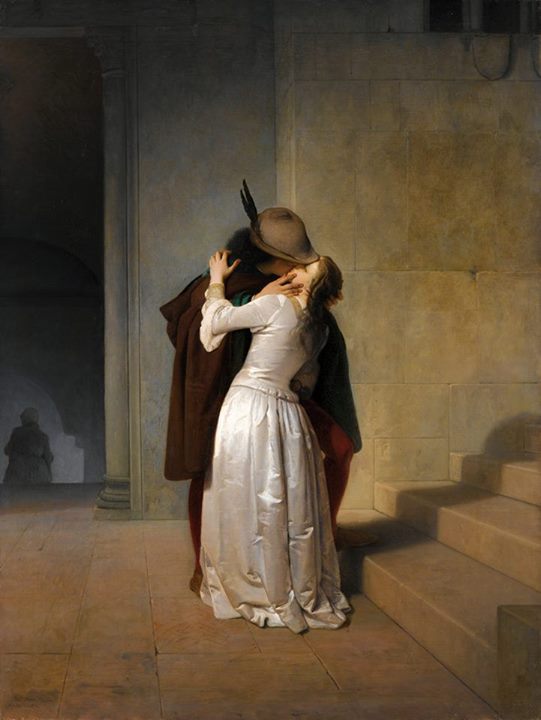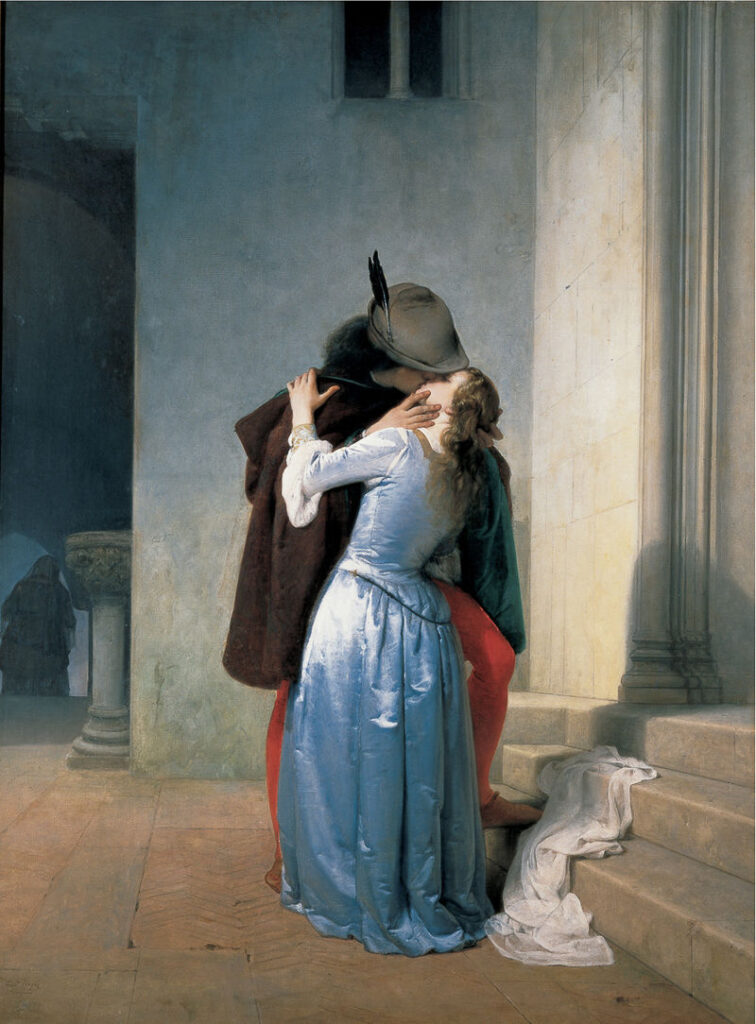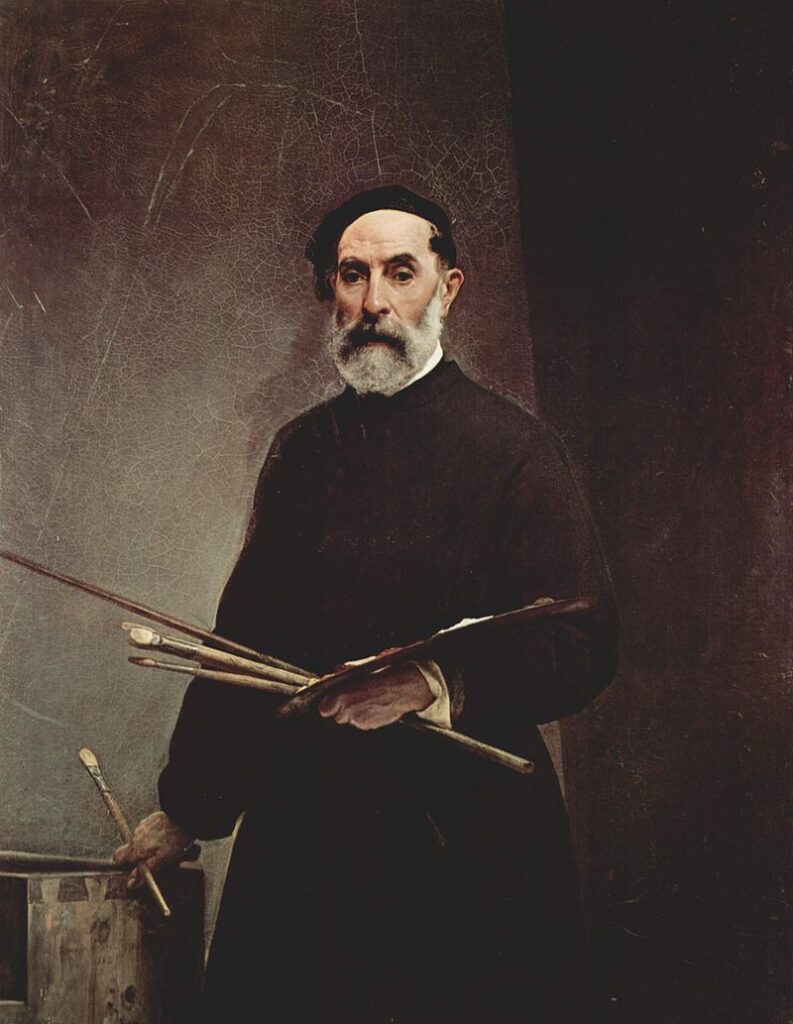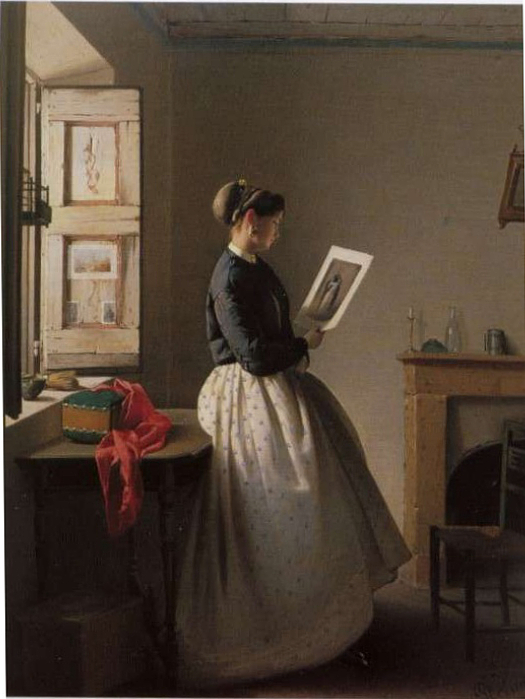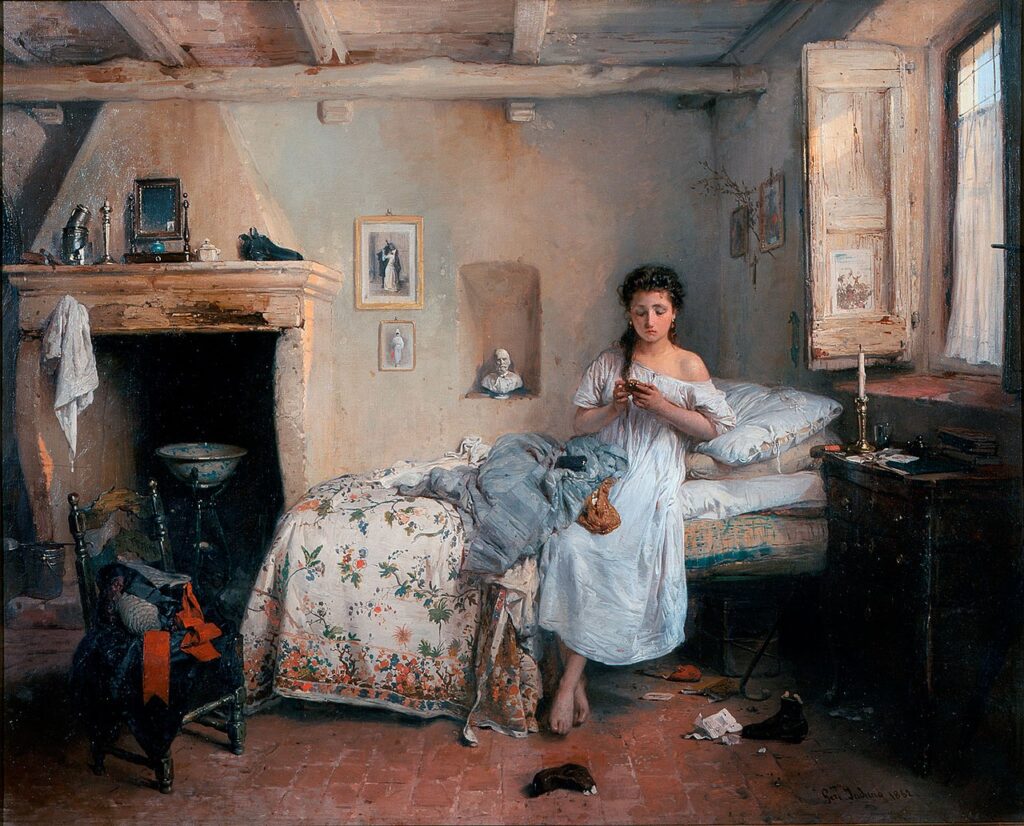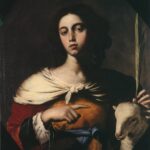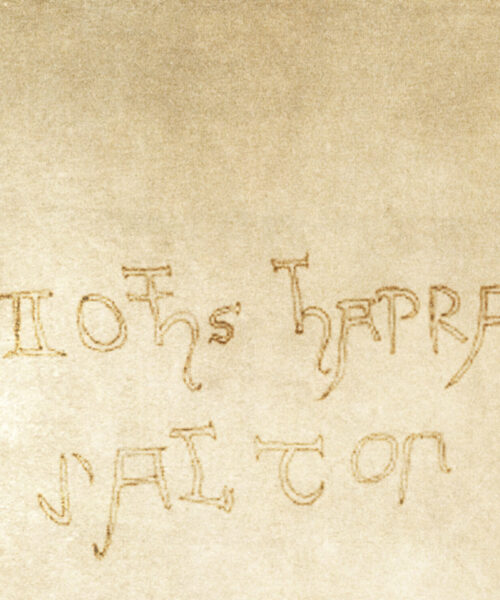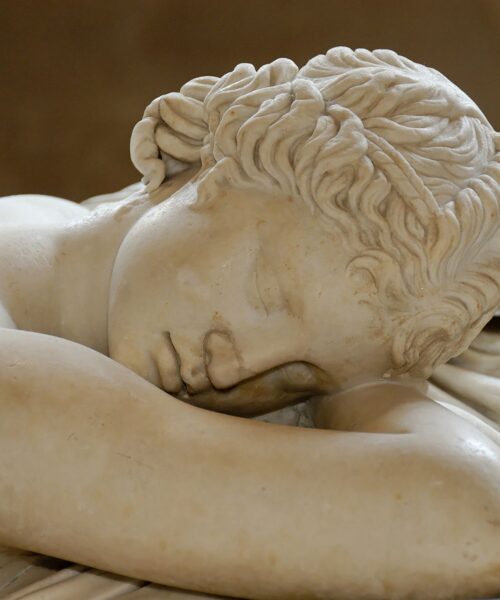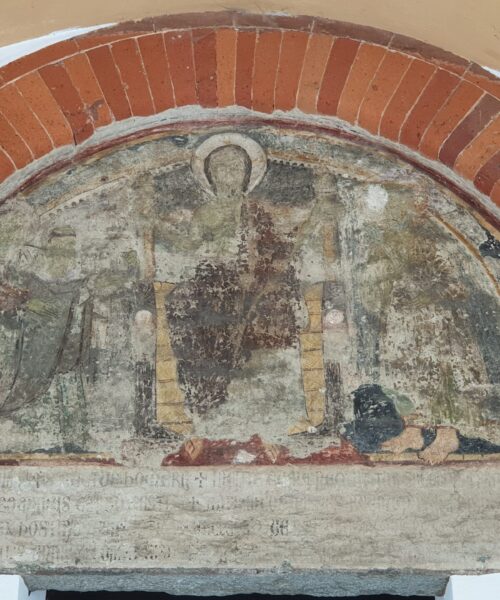February 14th, Valentine’s Day, is universally celebrated as the day of lovers, yet few remember it’s also dedicated to the patron saint of those with epilepsy. In the art world, this date conjures a specific image: “The Kiss” by Francesco Hayez (1791-1882). This piece, now an icon of romantic love, overshadows the saint himself in the collective imagination.
Francesco Hayez’s self-portrait (1862), housed in the Uffizi Gallery in Florence, offers an intimate glimpse into the artist at 71 years of age. “The Kiss,” originally titled “The Kiss. Episode of Youth. Costumes of the 14th Century” by the artist himself, was commissioned by Count Alfonso Maria Visconti of Saliceto. This work fits perfectly within the Risorgimento painting movement, reflecting the ideals of national unity so prevalent among artists and intellectuals of that era.
In the art of that period, depictions of an idealized Middle Ages are common, with images evoking the communal era and embodying the ideals of freedom and independence longed for by Italians. “The Kiss,” a manifesto of romantic art, is set in this historical context, as suggested by its title.
The scene of the passionate kiss between the two protagonists recalls the figure of Robin Hood, the champion of the oppressed, and his beloved Marian, a symbol of national redemption. When the painting was exhibited in 1859 at the Pinacoteca di Brera, before joining Count Alfonso Maria Visconti’s collection (now permanently returned to Brera), it achieved immediate extraordinary success, fueled also by the revolutionary atmosphere of the time and its anti-Austrian political undertones.
Francesco Hayez created four versions of this subject, each with minor variations. Two works by other artists, “A Sad Tale” by Giuseppe Reina (1862) and “Sad Premonition” by Gerolamo Induno (1862), highlight the influence and success of “The Kiss,” incorporating Hayez’s painting into their works.
An enigmatic detail in Hayez’s painting is the shadow on the left side, beyond the door. This dark element could refer to the arrival of the girl’s husband, father, or brother, or symbolize the historical period marked by the presence of the Carbonari and Austro-Hungarian spies. A mystery that continues to fascinate art lovers.
To further enrich our reflection on the impact and meaning of Francesco Hayez’s “The Kiss,” it’s worthwhile exploring its influence on other artists of his time. Two emblematic paintings in this regard are “A Sad Tale” by Giuseppe Reina (1862) and “Sad Premonition” by Gerolamo Induno (1862). These works, respectively in private ownership and housed in the Pinacoteca Brera in Milan, significantly incorporate Hayez’s “The Kiss”: in the first, the image is delicately held in hand by the protagonist, while in the second, it’s depicted framed and hung on the wall. These references not only attest to the popularity of Hayez’s painting but also reveal its broad influence in the artistic sphere of the era.

